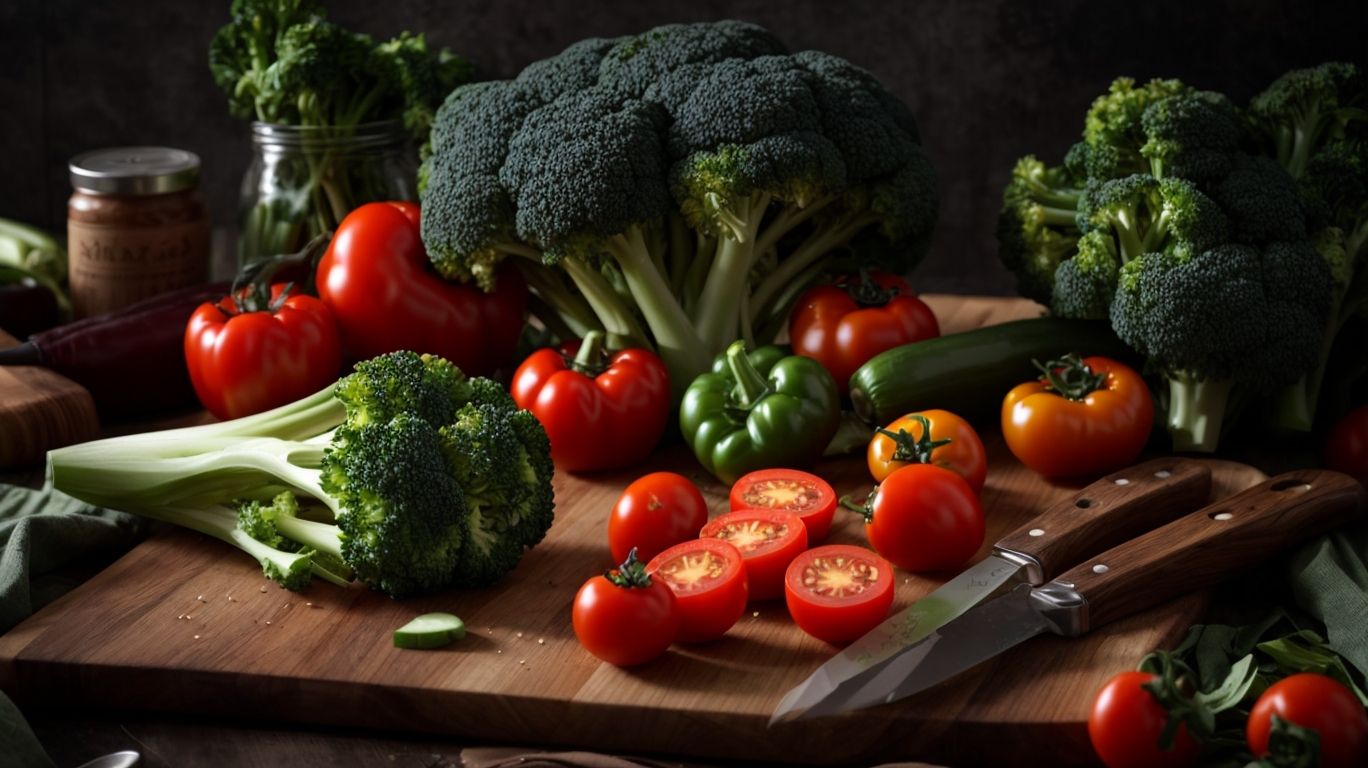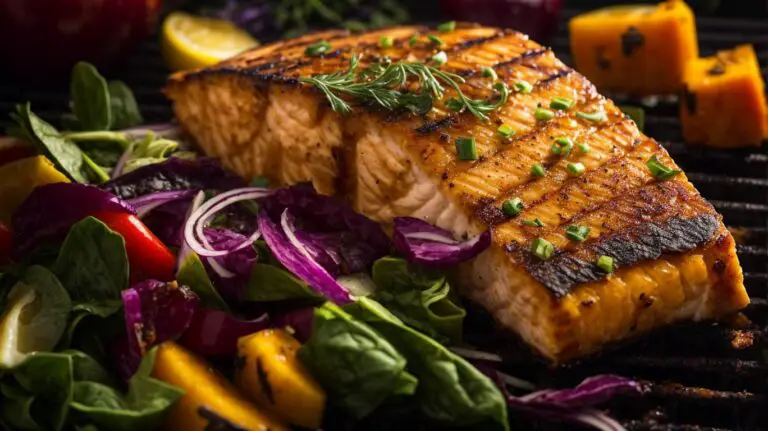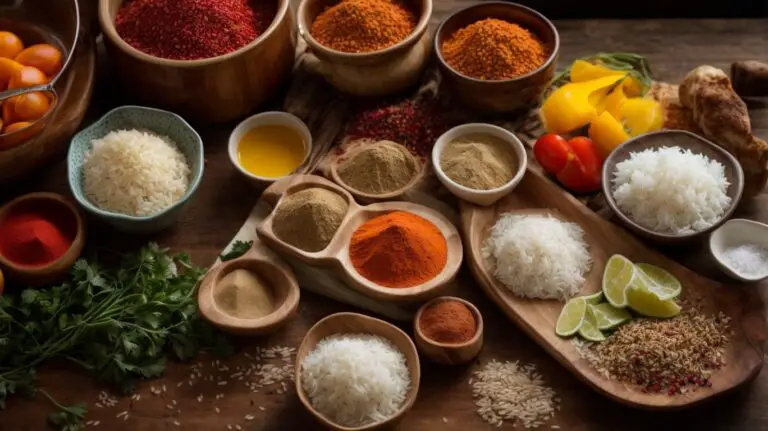How to Cook Vegetables Without Losing Nutrients?
Are you looking to cook vegetables in a way that retains their nutrients and flavors?
As a former chef and award-winning culinary blogger, I understand the importance of preserving the goodness of vegetables through cooking.
In this article, I will share with you the different cooking methods that help retain nutrients in vegetables, along with tips on choosing the right vegetables for each method.
Stay tuned to learn how you can maximize the nutritional benefits of your favorite veggies in every dish!
Key Takeaways:
Why is it Important to Retain Nutrients in Vegetables?
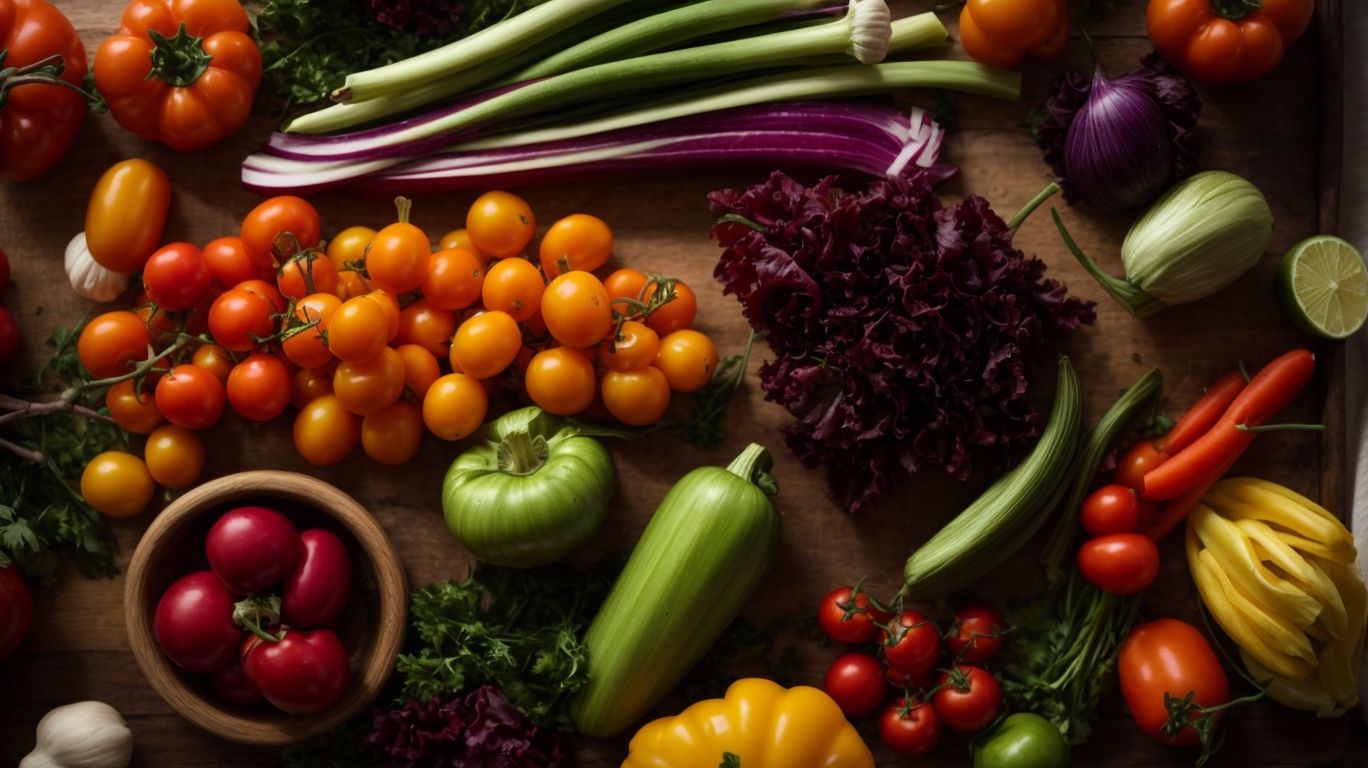
Credits: Poormet.Com – Lawrence Rivera
Retaining nutrients in vegetables is crucial for maintaining their health benefits, as they are rich sources of essential vitamins and antioxidants that support overall well-being.
The preservation of these essential nutrients in vegetables is vital for ensuring that individuals reap the maximum nutritional benefits from their consumption. Nutrient retention plays a significant role in not only maintaining the freshness and flavor of vegetables but also in enhancing their health-promoting properties. When cooking or processing vegetables, it is important to employ methods that minimize nutrient loss. For example, steaming or microwaving vegetables instead of boiling them helps in retaining more of their valuable nutrients.
What Nutrients are Found in Vegetables?
Vegetables are packed with a variety of essential nutrients such as vitamins, antioxidants, fiber, and potassium, all of which play vital roles in promoting good health.
These nutrient powerhouses are essential for various bodily functions. Vitamins, such as A, C, and K, are crucial for immune function, collagen production, and blood clotting.
- Antioxidants
protect cells from damage and reduce the risk of chronic diseases.
| Fiber | Potassium |
|---|---|
| supports digestive health | helps regulate blood pressure |
Including a colorful array of vegetables in your diet ensures you receive a wide range of these beneficial nutrients.
What Happens to Nutrients When Cooking Vegetables?
When cooking vegetables, the exposure to varying temperatures and methods such as sauteing, griddling, baking, and roasting can impact the nutrient content, altering their beneficial properties.
Each cooking method affects vegetables differently due to the variations in temperature and exposure to water.
- Sautéing, for instance, involves quick cooking at high heat in a small amount of oil, which can help retain water-soluble vitamins like Vitamin C but may lead to the loss of heat-sensitive nutrients.
- Griddling, where vegetables are cooked on a hot flat surface, can enhance flavors but may result in the reduction of certain vitamins and antioxidants due to direct heat exposure.
- Baking and roasting vegetables at high temperatures can contribute to caramelization and intensified flavors but may cause a decline in water-soluble vitamins like B vitamins and Vitamin C.
Learning how each cooking method affects vegetables can help in preserving their nutritional value.
Methods for Cooking Vegetables Without Losing Nutrients
To preserve the nutrient content of vegetables during cooking, various methods such as steaming, stir-frying, blending, roasting, microwaving, and grilling can be employed to minimize nutrient loss.
Steaming vegetables is a gentle cooking method that helps retain their color, texture, and most importantly, their nutrients. By using steam to cook vegetables, you can avoid the leaching of water-soluble vitamins into the cooking water, thus preserving their nutritional value.
Stir-frying, on the other hand, is a quick cooking technique that uses high heat and minimal oil, allowing vegetables to retain their crunchiness and vitamins. The fast cooking time also helps in preserving the vibrant colors of the vegetables.
Blending vegetables into smoothies or soups is an excellent way to consume a high amount of nutrients in a single serving. Blending helps break down the cell walls of vegetables, making the nutrients more accessible to the body.
Roasting vegetables with a drizzle of oil and seasoning enhances their natural flavors and caramelizes their sugars without losing many nutrients. This method locks in the flavors while maintaining the nutritional content.
Microwaving vegetables is a quick and convenient way to cook them while retaining most of their vitamins and minerals. Using minimal water and covering the dish can help vegetables retain their nutrients during microwaving.
Grilling vegetables adds a smoky flavor and char that enhances their taste profile while preserving their essential nutrients. Quick grilling over high heat ensures that veggies cook fast, sealing in their nutrients.
Steaming
Steaming is a gentle cooking method that helps preserve the nutrients, vitamins, and antioxidants present in vegetables, making it an ideal technique for retaining their health benefits.
When vegetables are steamed, they are cooked in a closed environment where the steam gently surrounds them, allowing for a more even distribution of heat. This method helps to soften the vegetables without submerging them in water, which can lead to nutrient loss. By steaming vegetables, you also reduce the risk of overcooking, maintaining their vibrant colors, textures, and flavors.
Steaming is a quick and easy way to prepare vegetables without the need for added fats or oils, making it a healthier cooking option. To maximize the nutritional value of steamed vegetables, it’s essential not to overcook them; aim for a slightly crisp texture to ensure that the vitamins and minerals are preserved.
Stir-frying
Stir-frying vegetables in olive oil is a quick and flavorful cooking method that helps preserve nutrients and antioxidants while enhancing the taste and texture of the dish.
When you stir-fry vegetables in olive oil, the high heat allows them to cook quickly, maintaining their crispness and vibrant colors. This method also helps to lock in essential vitamins and minerals that might otherwise be lost through prolonged cooking. Olive oil’s high smoke point makes it ideal for stir-frying, ensuring that the beneficial compounds in the oil remain stable.
One key benefit of using olive oil for stir-frying is its ability to add a subtle richness and depth of flavor to the vegetables without overpowering their natural taste. Olive oil contains heart-healthy monounsaturated fats that can help reduce inflammation and support overall well-being.
Blending into Soups
Blending vegetables into soups is a convenient way to retain their nutrients, fiber, and vitamins, creating delicious and nutritious dishes that offer a wide range of health benefits.
One of the key advantages of blending vegetables into soups is that it helps to preserve the vital nutrients that may be lost during other cooking methods. The process of blending breaks down the cell walls of the vegetables, making their nutrients more accessible and easier for the body to absorb. This means that you get a higher concentration of essential vitamins and minerals in each spoonful of your soup.
- Blending vegetables into soups also allows for a seamless integration of different flavors, enhancing the overall taste profile of your dish. By combining various vegetables such as carrots, bell peppers, tomatoes, and spinach, you can create a harmonious blend of flavors that tantalize your taste buds.
- As an innovative idea, consider using blended vegetables as a base for your soups instead of traditional broth. This not only adds richness and depth to the soup but also boosts its nutritional value. You can experiment with different vegetable combinations to create unique and satisfying broths.
- Another creative way to incorporate blended vegetables into soups is by making creamy vegetable soups without the need for heavy cream. By blending vegetables like cauliflower, sweet potatoes, or butternut squash, you can achieve a velvety texture that mimics creaminess without the added calories.
Roasting at Low Temperatures
Roasting vegetables at low temperatures helps maintain their health benefits and phytonutrient content, resulting in flavorful dishes that retain the nutritional value of the ingredients.
When vegetables are roasted at low temperatures (under 400°F), the slow cooking process ensures that essential nutrients like vitamin C and antioxidants are preserved in the final dish. This gentle cooking method also locks in the vibrant colors and flavors of the vegetables, enhancing the overall sensory experience of the meal.
To achieve optimal roasting results while keeping the vegetables nutritious, it is recommended to coat them lightly in heart-healthy oils like olive or avocado oil, sprinkle with a pinch of sea salt for flavor enhancement, and avoid excessive charring which can lead to nutrient loss.
Microwaving
Microwaving vegetables is a quick and efficient cooking method that helps retain nutrients, vitamins, and antioxidants, making it a convenient option for preserving the nutritional value of vegetables.
When vegetables are microwaved, they are cooked quickly in a minimal amount of liquid, which helps to seal in their essential nutrients. Unlike boiling, where some nutrients leach into the water, microwaving requires very little water, reducing the loss of vitamins and minerals. The shorter cooking time compared to methods like boiling or steaming further aids in preserving the nutritional content. Microwaving vegetables can also help retain more antioxidants, which play a vital role in promoting good health.
Grilling
Grilling vegetables helps enhance their flavor while preserving their health benefits and antioxidant capacity, offering a delicious and nutritious cooking method that retains the goodness of the ingredients.
When vegetables are grilled, the high heat caramelizes their natural sugars, creating a delightful smoky flavor profile that adds depth to their taste. Grilling allows vegetables to retain more of their vitamins and minerals compared to other cooking methods like boiling, where nutrients can leach into the water.
Grilling also adds a pleasant charred exterior to vegetables, providing a satisfying textural contrast.
To make the most of grilling vegetables, marinating them before cooking can infuse them with extra flavor and help prevent charring. Experimenting with different seasonings and oils while grilling can further elevate the taste profile of vegetables without compromising their nutritional value.
What Vegetables are Best Suited for Each Cooking Method?
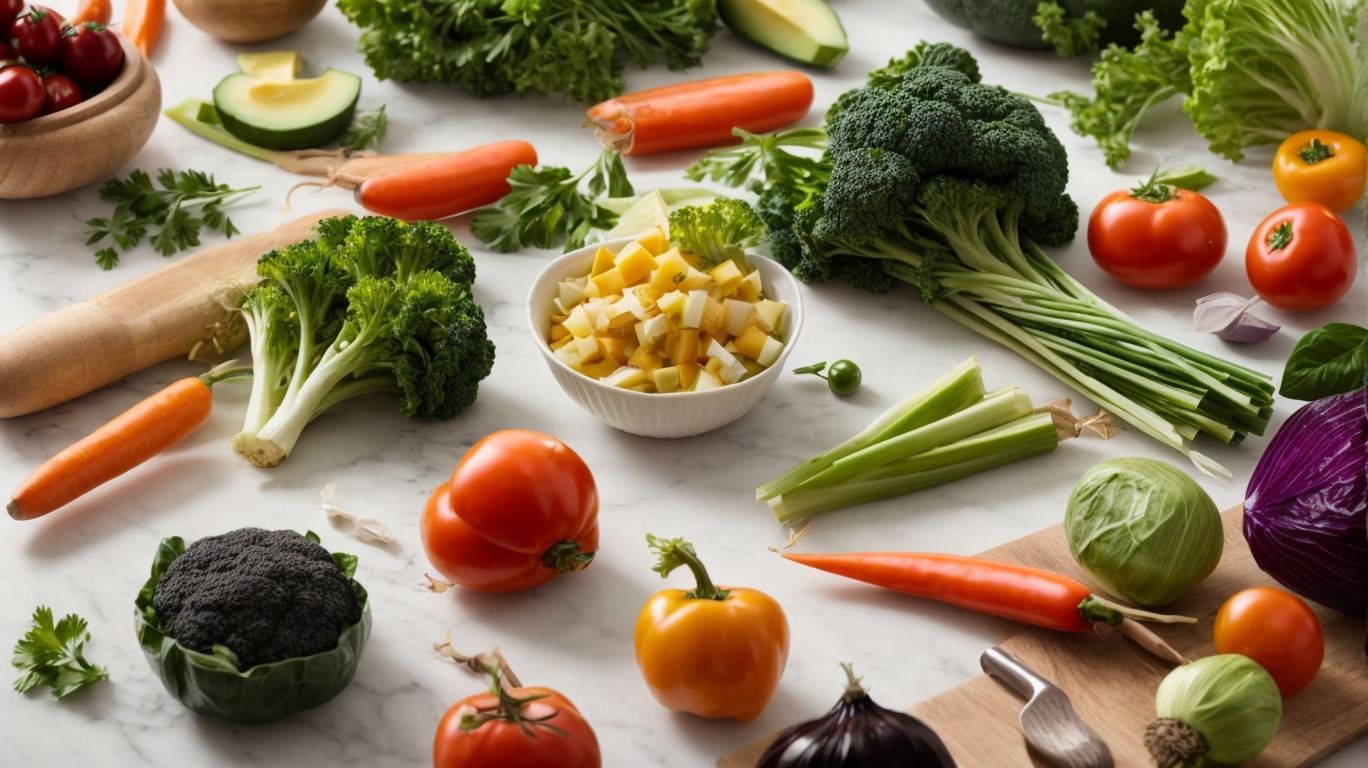
Credits: Poormet.Com – Joshua Jackson
Different types of vegetables are best suited for specific cooking methods, with leafy greens, root vegetables, cruciferous vegetables, allium vegetables, and nightshade vegetables each having optimal cooking techniques that preserve their unique flavors and nutrients.
Leafy greens, such as spinach and kale, are delicate and best enjoyed when sautéed lightly or eaten raw to maintain their crisp texture and vibrant color.
Root vegetables like carrots and potatoes shine when roasted, bringing out their natural sweetness and hearty flavors.
Cruciferous vegetables, including broccoli and cauliflower, benefit from steaming or roasting to preserve their nutritional value and avoid bitterness.
Allium vegetables like onions and garlic are often caramelized to develop their rich, savory taste, complementing a wide range of dishes.
Nightshade vegetables, such as tomatoes and eggplants, are perfect for grilling or roasting to enhance their natural umami flavors and create a smoky depth in recipes.
Leafy Greens (Steaming, Stir-frying, Blending)
Leafy greens like spinach and kale are best prepared through steaming, stir-frying, or blending methods to retain their vitamins, fiber content, and nutritional benefits.
Steaming is a gentle cooking method that helps preserve the nutrients in leafy greens, as it cooks them quickly without leaching out valuable vitamins and minerals. Stir-frying is another great option as it retains the crunchiness of the greens while still cooking them thoroughly. Blending, on the other hand, is an effective way to incorporate leafy greens into smoothies, soups, or sauces, ensuring that you consume them in a delicious and easily digestible form.
For a creative and nutritious dish, try making a spinach and feta stuffed chicken breast or a kale and white bean soup. You can also blend spinach into a fruit smoothie for a vibrant green boost of vitamins. Experimenting with different cooking methods can help you enjoy the benefits of leafy greens in various delicious ways.
Root Vegetables (Roasting, Microwaving, Grilling)
Root vegetables such as carrots and sweet potatoes are ideally cooked through roasting, microwaving, or grilling to preserve their fiber content, essential nutrients, and natural flavors.
Roasting root vegetables like beets and parsnips brings out their natural sweetness as the high heat caramelizes their sugars, creating a delicious crispy exterior while keeping their nutritional value intact.
Microwaving root vegetables such as turnips and rutabagas is a quick and efficient way to cook them, locking in their vitamins and minerals with minimal added fats.
Grilling root vegetables including radishes and onions not only imparts a smoky flavor but also adds a delightful char that enhances their overall taste profile, making them a perfect accompaniment to grilled meats or salads.
Cruciferous Vegetables (Steaming, Stir-frying, Blending)
Cruciferous vegetables like broccoli and cauliflower retain their antioxidants and phytonutrients best when steamed, stir-fried, or blended into dishes, ensuring the preservation of their health-promoting properties.
Steaming cruciferous vegetables is a gentle cooking method that helps retain their nutrients while keeping them tender. This process involves cooking the veggies over boiling water, preserving their crispness and avoiding the loss of water-soluble vitamins.
Stir-frying is another excellent way to cook cruciferous vegetables, as the quick cooking time helps to maintain their crunchiness and vibrant colors. The high heat ensures that these veggies are cooked rapidly, locking in their flavors and health benefits.
Blending cruciferous vegetables into smoothies or soups is a creative way to incorporate them into your diet. This method not only retains their nutrients but also adds a creamy texture and subtle flavor to your dishes.
Allium Vegetables (Roasting, Stir-frying, Blending)
Allium vegetables such as garlic and onions are best suited for roasting, stir-frying, or blending to preserve their distinct flavors and essential nutrients, enhancing the taste and nutritional value of dishes.
When roasting garlic, drizzle whole cloves with olive oil, wrap them in foil, and bake until soft and caramelized, resulting in a sweet and mellow flavor that complements a range of dishes.
Stir-frying onions at high heat retains their natural sweetness and adds a caramelized, savory note to stir-fry dishes, enhancing the overall depth of flavors.
In recipes that call for blending onions or garlic, pureeing them with other ingredients creates a smooth texture and a robust base for sauces, soups, and marinades.
Nightshade Vegetables (Grilling, Roasting, Stir-frying)
Nightshade vegetables like tomatoes and bell peppers are best cooked through grilling, roasting, or stir-frying methods to preserve their health benefits and lycopene content, creating vibrant and nutritious dishes.
Grilling is a fantastic method for intensifying the flavors of tomatoes and bell peppers while maintaining their nutritional value. The high heat caramelizes the natural sugars, giving a delightful smoky taste.
Roasting these vegetables enhances their sweetness and imparts a rich depth of flavor. Stir-frying, on the other hand, allows for quick cooking at high heat, keeping the veggies crisp and locking in their vibrant colors.
Tips for Maximizing Nutrient Retention in Vegetables
To maximize nutrient retention in vegetables, it is essential to start with fresh produce, utilize acidic ingredients in the cooking process, cut vegetables into larger pieces, cook them quickly, and store cooked vegetables properly to preserve their nutritional value.
When selecting fresh produce, opt for vegetables that are firm, brightly colored, and without blemishes as they are likely to have higher nutrient content.
Incorporating acidic ingredients such as lemon juice or vinegar can help maintain the vibrant colors and nutritional value of vegetables during the cooking process.
- Cutting vegetables into larger pieces helps to minimize nutrient loss as smaller cuts have more surface area exposed to heat.
- Quick cooking methods such as steaming, stir-frying, or blanching help to retain water-soluble vitamins that can be lost in prolonged cooking.
After cooking, properly store any leftover vegetables in airtight containers in the refrigerator to prevent nutrient degradation.
Use Fresh Vegetables
Using fresh vegetables is essential for maximizing the nutrient content, vitamins, and antioxidants in dishes, ensuring the retention of valuable health benefits.
Fresh vegetables are packed with a plethora of essential nutrients that tend to degrade over time; hence, incorporating them into your meals ensures that you get the maximum nutritional value. When fresh produce is picked at peak ripeness, it contains a higher concentration of vitamins and antioxidants, promoting overall health.
To select the best vegetables, look for vibrant colors, firm textures, and avoid any signs of wilting or bruising. Storing them properly in the fridge in a crisper drawer or in a cool, dark place can extend their freshness and preserve their nutrients longer, helping you make the most out of your meals.
Cut Vegetables into Larger Pieces
Cutting vegetables into larger pieces before cooking helps preserve their nutrients and minimizes nutrient loss during the cooking process, ensuring that the vegetables retain their healthful properties.
When vegetables are chopped into smaller pieces, they tend to lose more nutrients through exposure to heat and water during cooking, leading to a reduction in their overall nutritional content. By keeping the vegetable pieces larger, you can reduce the surface area exposed to these elements, thereby helping to maintain their valuable antioxidants, vitamins, and minerals.
Cooking larger vegetable pieces also allows for a quicker cooking process, which means they spend less time exposed to high heat, further aiding in the retention of nutrients. To optimize the nutritional benefits of your vegetables, consider gently steaming or sautéing them in larger chunks rather than finely chopping them before cooking.
Cook Vegetables Quickly
Cooking vegetables quickly helps prevent nutrient loss and preserves the vitamins and beneficial compounds present in the vegetables, ensuring that they retain their nutritional value.
When you opt for rapid cooking methods such as stir-frying, steaming, or blanching, you minimize the exposure of the vegetables to heat, thereby helping to retain more of the essential nutrients. Quick cooking also helps to maintain the vivid colors and crisp textures of the vegetables, making them more visually appealing and appetizing.
- To efficiently prepare vegetables, it’s advisable to cut them into uniform sizes to ensure even cooking.
- Choose fresh vegetables and avoid overcooking them to preserve their healthful properties.
Add Acidic Ingredients to Cooking Process
Incorporating acidic ingredients such as lemon juice or vinegar into the cooking process can help preserve the nutrients in vegetables, enhance flavor, and maximize the nutritional benefits of the dish.
Acidic ingredients play a crucial role in breaking down tough fibers in vegetables, making them easier to digest and absorb the nutrients they offer. The acidic environment created during cooking can also help maintain the vibrant colors of vegetables, preventing them from turning mushy and dull.
Examples of acidic components that can be added to vegetable dishes include balsamic vinegar, tomatoes, yogurt, and citrus fruits like oranges and grapefruits. These ingredients not only add a tangy kick to the dish but also provide a rich source of vitamin C and antioxidants, further enhancing the nutritional profile of the meal.
Store Cooked Vegetables Properly
Properly storing cooked vegetables is essential for maintaining their nutrient content, vitamins, and flavor, ensuring that the prepared dishes remain nutritious and delicious for consumption.
Regarding refrigerating cooked vegetables, it is advisable to store them in airtight containers or resealable bags to prevent moisture loss and maintain their freshness. Labeling the containers with the date of preparation can help in keeping track of their freshness and consumption timeline.
For freezing cooked vegetables, you should blanch them before freezing to help retain their color, texture, and nutritional value. Utilizing proper storage techniques not only preserves the taste and quality of the dishes but also minimizes food wastage and ensures that you can enjoy them for longer periods.
Frequently Asked Questions
1. How can I cook vegetables without losing nutrients?
Answer:
There are several methods you can use to cook vegetables without losing nutrients. One way is to steam them, which helps retain the most nutrients. You can also roast, grill, or stir-fry vegetables to retain most of their nutrients.
2. Is it better to cook vegetables or eat them raw?
Answer:
Both methods have their benefits. Cooking vegetables can make certain nutrients more available for absorption, while raw vegetables provide enzymes and other nutrients that may be reduced through cooking. It’s best to have a balance of both in your diet.
3. Can I microwave vegetables without losing nutrients?
Answer:
Yes, microwaving vegetables is a quick and efficient way to cook them without losing nutrients. Just make sure not to overcook them, as this can lead to nutrient loss.
4. How long should I cook vegetables to retain the most nutrients?
Answer:
The length of time you should cook vegetables depends on the method being used and the type of vegetable. Generally, the shorter the cooking time, the more nutrients will be retained. Aim to cook vegetables until they are just tender, rather than mushy.
5. What vegetables should I avoid cooking to retain nutrients?
Answer:
There are no particular vegetables you should avoid cooking, as all vegetables provide valuable nutrients. However, some vegetables, such as broccoli and cauliflower, may lose more nutrients when boiled compared to other cooking methods.
6. Can I reheat leftover cooked vegetables without losing nutrients?
Answer:
While reheating cooked vegetables may result in some nutrient loss, it is still a nutritious option. To minimize nutrient loss, only reheat the amount you intend to eat and avoid reheating multiple times.

